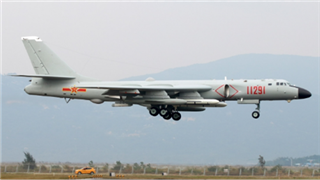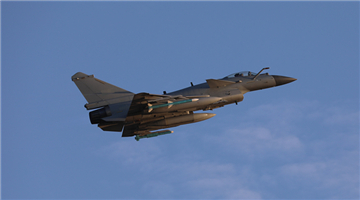By Hu Bo
The US Navy 7th Fleet released a piece of news on December 22 that its warship USS John S. McCain conducted a “freedom of navigation operation” near the Nansha islands and reefs that day. In response, a spokesperson for the PLA Southern Theater Command said, the US guided missile destroyer USS John S. McCain trespassed into the waters adjacent to China’s Nansha islands and reefs without Chinese Government’s permission, and the naval and aerial forces of the Chinese PLA Southern Theater Commandwarned it off. Public reports show that this was the 9th time this year that an American military vessel trespassed into waters within 12 nautical miles of China-stationed Nansha islands and reefs and into Xisha territorial waters and inland waters.
It must be clarified that “freedom of navigation” is a universally acknowledged concept, but “freedom of navigation operation” is a US-exclusive concept. Established in 1979 and formally implemented in 1983, the “freedom of navigation operation” program was intended to challenge, through diplomatic and military operations, what the US thought were “excessive maritime claims” by other states. Completely outside the framework of international laws such as the United Nations Convention on the Law of the Sea(UNCLOS), the program is essentially a hegemonistic move taken by the US to dodge its international duties and replace international law with its domestic rules in the final stage of the negotiations on UNCLOS. The program has no legitimacy in the international community, and even US allies, including the UK, Japan, and Australia, don’t adopt its concepts and practices.
Therefore, China and other countries don’t have to add legitimacy to America’s domestic concepts and practices, such as its operations in the South China Sea. To be more accurate, the US warship trespassed into waters within 12 nautical miles of Chinese islands and reefs or its territorial sea. The statement by PLA Southern Theater Command is accurate and rigorous. More importantly, while the Pentagon is flexing muscles in the South China Sea, China is stepping up efforts to maintain maritime security in the region.
On the evening of December 21, the Sierra Leone freighter “DONG YANG” was listing about 27 nautical miles northeast of the Wan’an Tan near the Nansha Islands. When receiving the request for help, China Maritime Search and Rescue Center deployed professional rescue ships the “Nan Hai Jiu 115” and “China Coast Guard 5402” and nearby merchant ships to help the distressed crew. All the crew members were saved by the afternoon of December 22.
With the development of China’s maritime forces in recent years, the outside world has been very concerned about its intentions in the South China Sea. China has repeatedly stressed that its policy of “shelving disputes” has remained unchanged and that it will, while strengthening necessary territorial defense and security prevention, increase the provision of security public goods in the region and contribute more to safeguarding regional peace and stability. The search-and-rescue operation for the Sierra Leone cargo freighter demenstrates that China acts on its commitment to fulfilling its international responsibilities.
Countries represented by the US have never stopped smearing and stigmatizing China on the international stage, making such false claims that China is coercing its neighbors or intending to control the South China Sea. But these accusations go against common sense. Tension or turmoil in the surrounding areas, including the South China Sea, is in no way to China’s advantage, and a chaotic surrounding environment does no good to China’s overall diplomacy and security.
China hopes to see a “stable” South China Sea. It has a strong and undisputed will to maintain peace and stability in the region and hopes to work with other claimant states and ASEAN members to jointly safeguard the South China Sea as their “common home” through the “dual-track approach” under the framework of “shelving disputes”. With China’s rise, its capabilities, including military strength, have indeed been enhanced considerably, which is often hyped up as the so-called evidence for the “China threat”. But we must see clearly that intention is also very important other than capabilities. Reasonable concern and anxiety are understandable, but those exaggerating China’s strength and intension must have an ax to grind.
In comparison, the US hopes to see a “messy” South China Sea because only in troubled waters would it have a chance to fish and to enhance its influence and presence.
In the 10-plus years since 2009, Washington’s stance on the South China Sea dispute has changed from “relatively neutral” to “taking sides” and to “direct meddling”, and its policy focus has moved from managing, controlling, and utilizing the dispute to creating dispute and inciting friction.
In recent years, the US military has been taking more frequent, more intense, and more targeted operations in the South China Sea. Its warplanes carry out close-in reconnaissance for thousands of times and its warships sail into South China Sea waters over 1,000 times every year. The US has become the most destabilizing factor in the South China Sea, both in terms of strength and intention.
When we observe the South China Sea situation, we need to be objective and rational and need common sense. It’s as plain as day who is making waves and stirring up trouble in the region.
(The author is director of the South China Sea Strategic Situation Probing Initiative)
This article, originally published on huanqiu.com, is translated from Chinese into English and edited by the China Military Online. The information, ideas or opinions appearing in this article do not necessarily reflect the views of eng.chinamil.com.cn.











